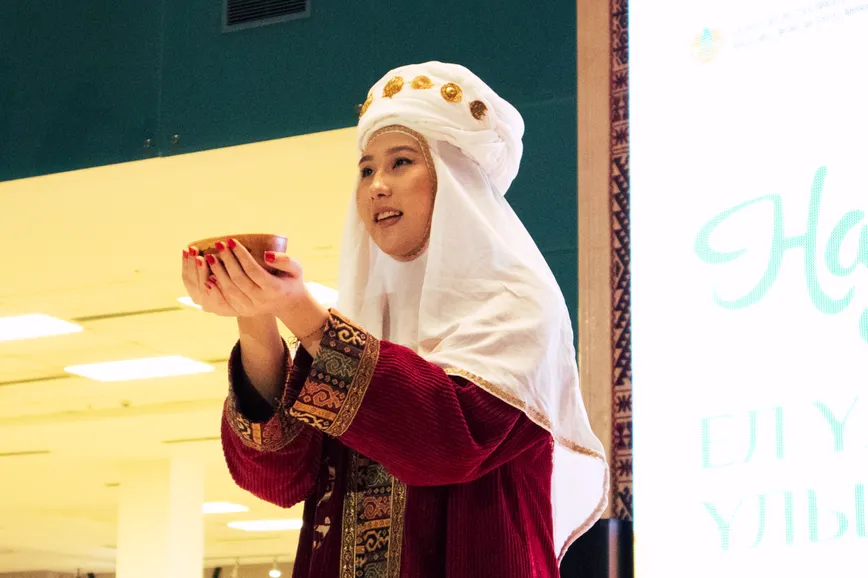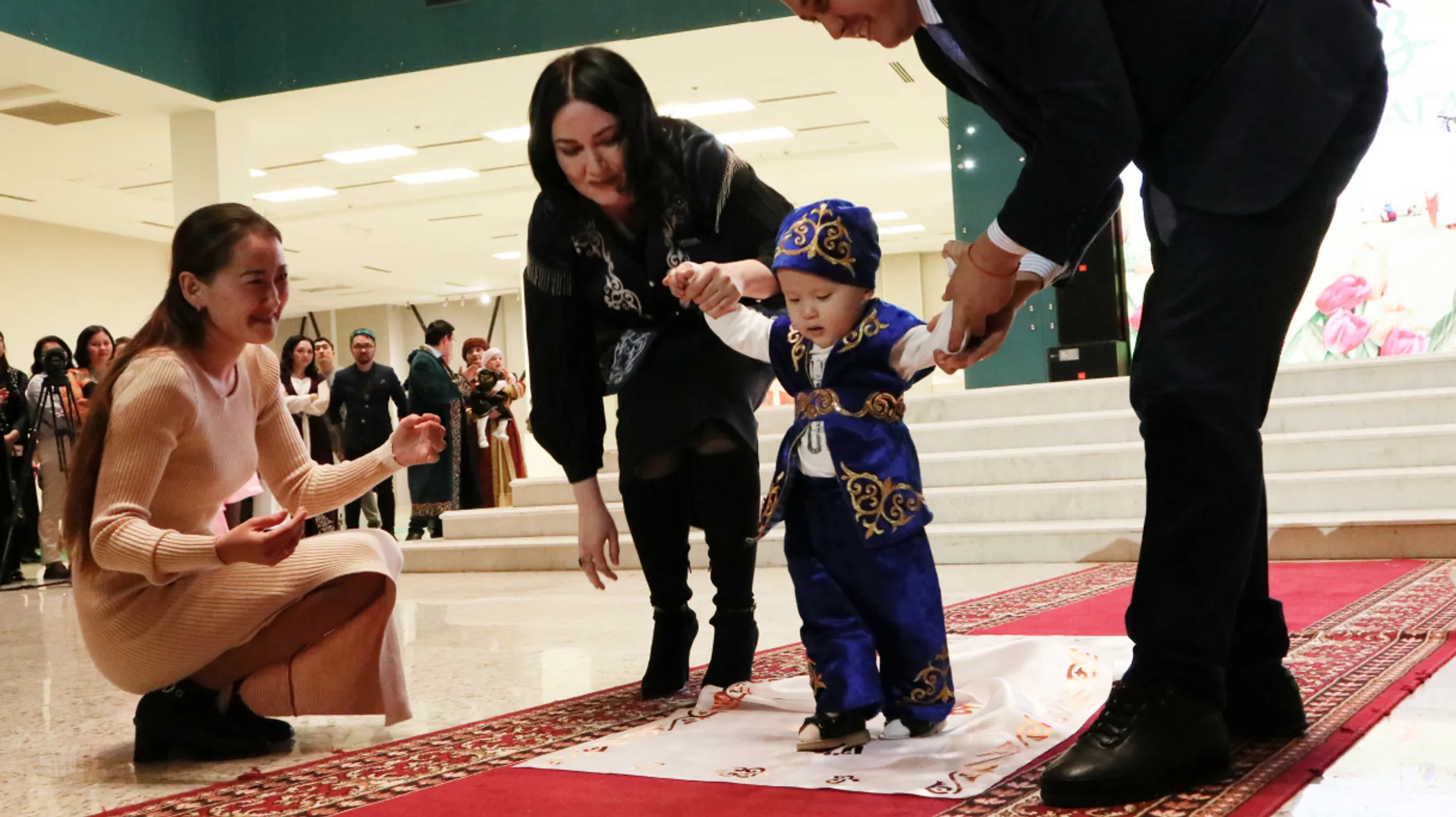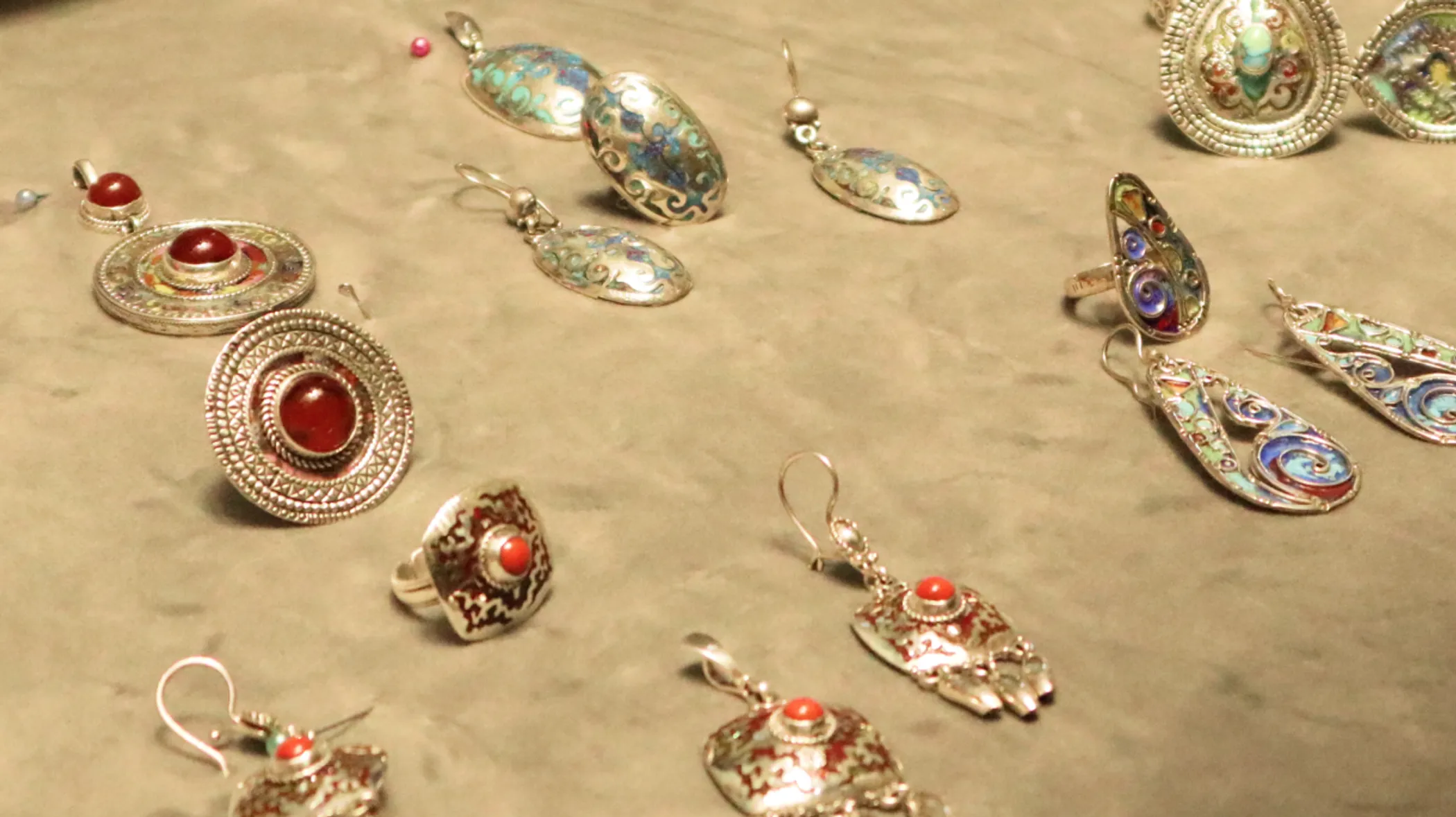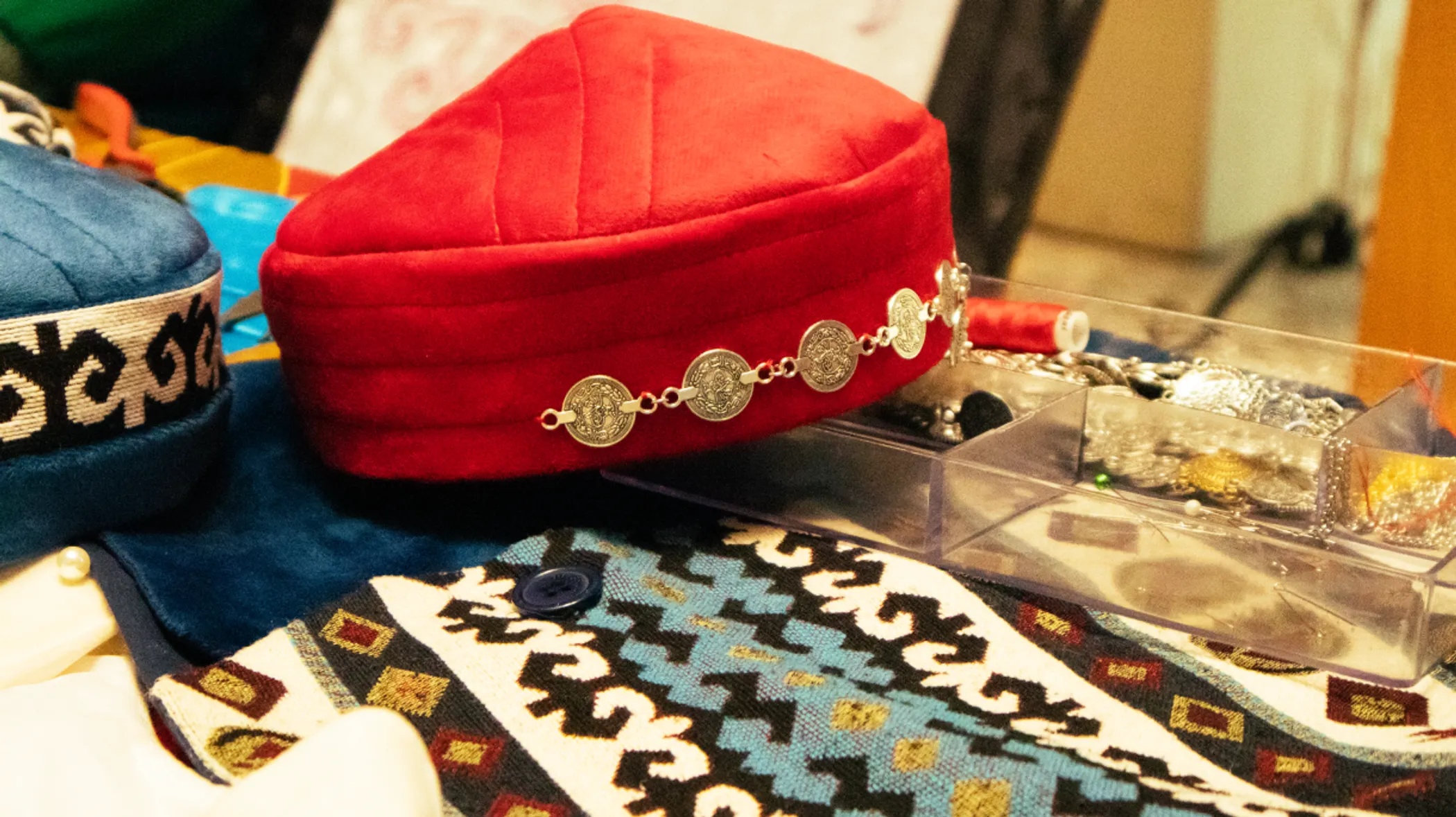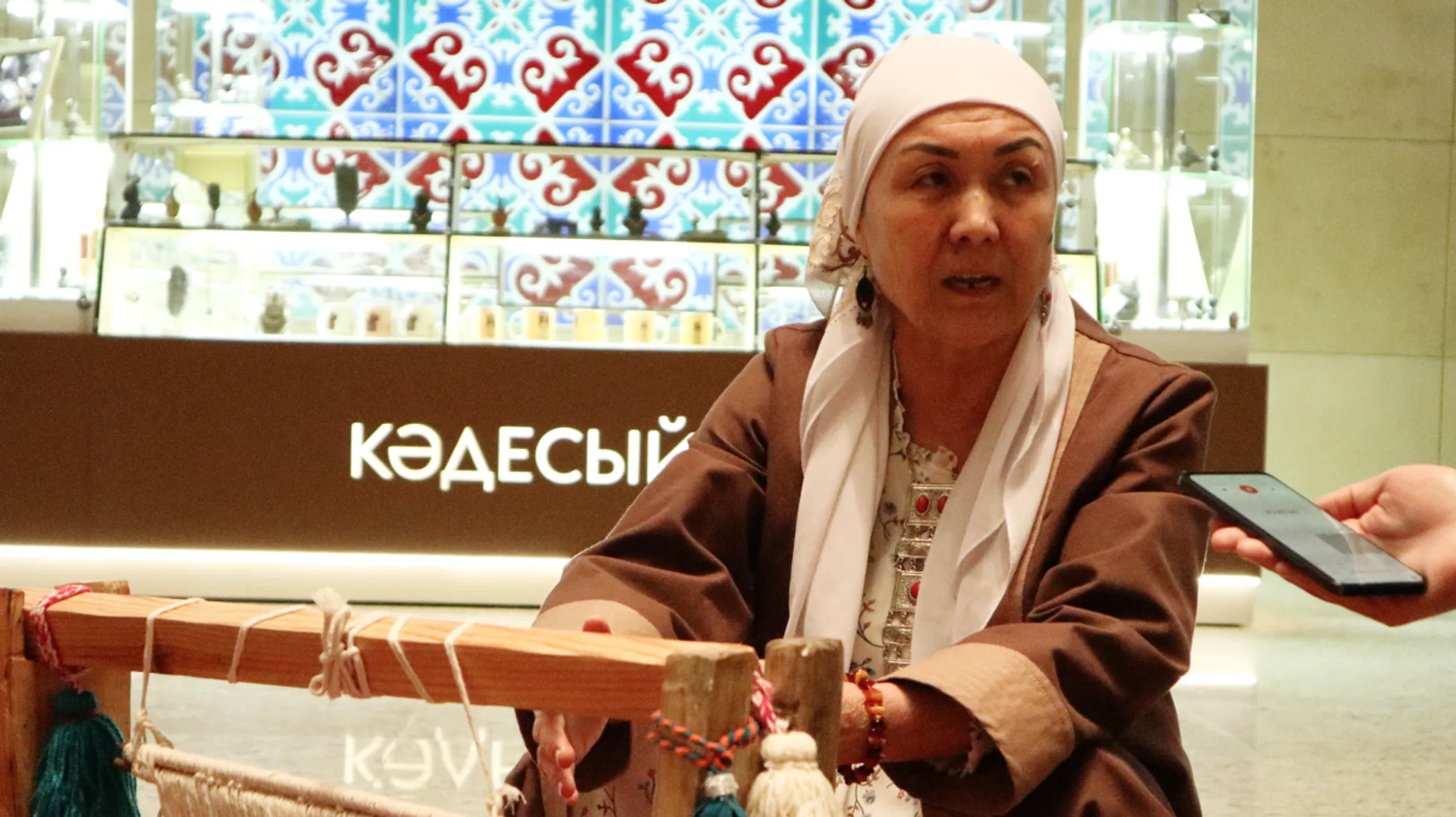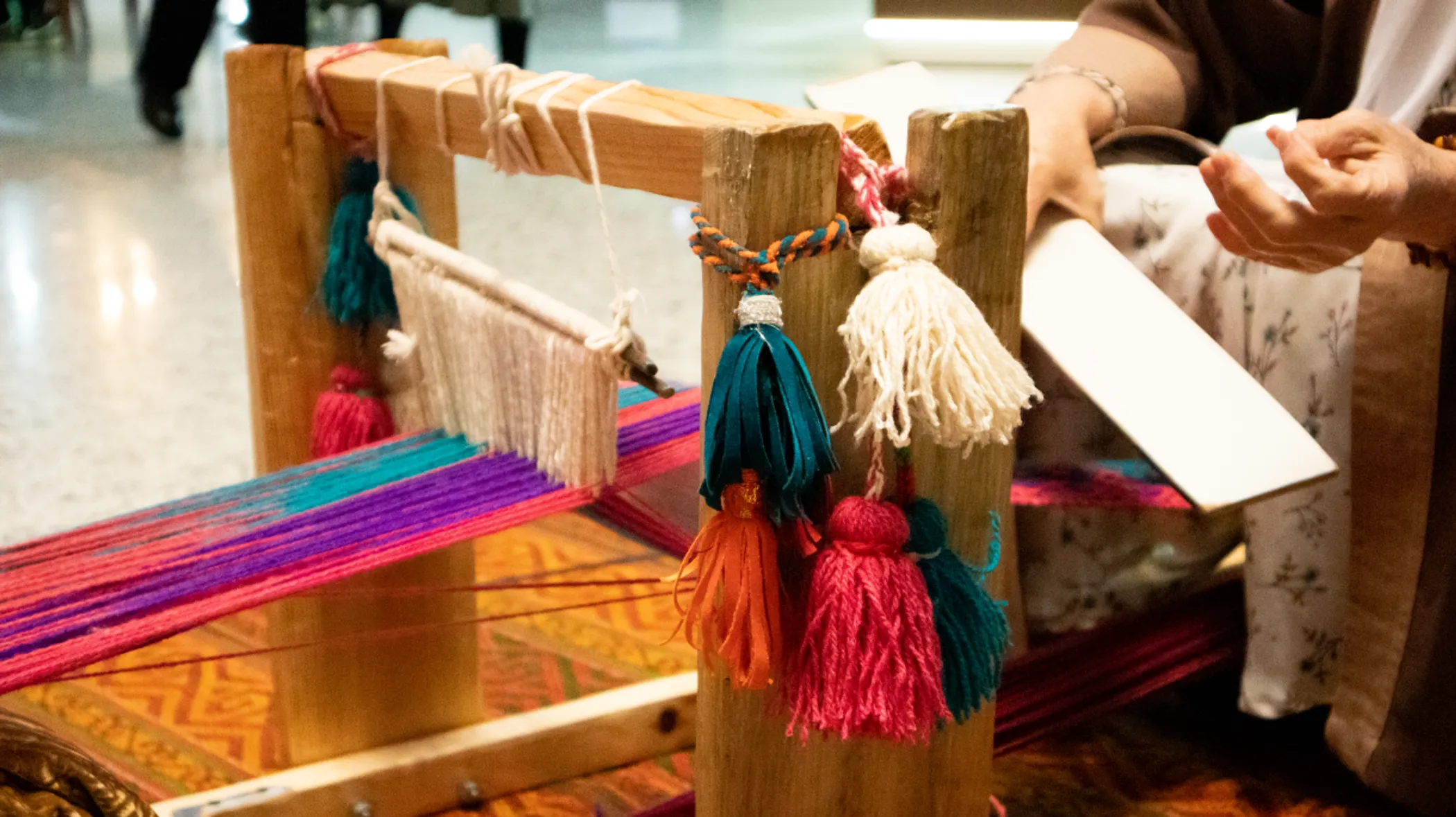On March 19, the National Museum of Kazakhstan hosted “Nauryz – a great day celebrated by the whole nation” (Наурыз - ел ұлықтаған ұлы күн), a comprehensive event to mark the festive spring season, QazMonitor reports citing the press service of the museum.
At the site of the Museum, conservation and restoration service workers and masters of ethnocultural associations organized an exhibition dedicated to the national applied art and material culture of the Turkic peoples. This included a section featuring Kazakh national games, where children could play bes asyk — a sheep ankle bone tossing game, togyzkumalak — a mancala-type board game, bestemshe — ‘Kazakh checkers’, and langi — a game where players continuously kick a special shuttlecock without letting it drop.
The festive event began with a theatrical performance of the korisu (meeting) tradition followed by a tusau kesu ceremony — a Kazakh tradition of cutting the fetters on a child’s feet so that their future road in life is easy and bright. Guests invited from various fields, including representatives of the diplomatic corps, public figures, artists, and scientists, were honored with the task of cutting the fetters that bound the legs of the young attendees — children from the Specialized Children's Home of the Akimat of Astana.
Another part of the event was an exhibition dedicated to Nauryz, presenting items of traditional furniture of the Kazakh people such as sandyktar (chests), and wall carpets — tuskiiz and tuskeste.
One of the craftsmen participating in the exhibition was Gulsim Zhusipova, a carpet knitting master who applied traditional weaving machine techniques for her alasha (carpet) works. “White color brings prosperity. Green color means procreation, the color red brings wealth,” explained Zhusipova, showing traditional handmade decorations. QazMonitor asked the master about the symbolism and history of Kazakh patterns.
“At first, it was plain, made of wool, and then over the years, we began to decorate it with our oyu ornek [Kazakh traditional ornaments], such as koshkar muyiz [sheep horns]. We were a nomadic people, therefore all our patterns were associated with livestock. There are ornaments resembling horns and hooves. Later, shifting to a settled life, we began to incorporate plants — curly and blooming. But all these patterns carry the same sacred meaning — everything will prosper.”
